Home >Software Tutorial >Office Software >How to use Excel mapping
How to use Excel mapping
- WBOYWBOYWBOYWBOYWBOYWBOYWBOYWBOYWBOYWBOYWBOYWBOYWBforward
- 2024-03-20 14:41:13781browse
php editor Zimo will introduce to you today how to use the mapping function in Excel. Excel mapping is a method of mapping data from one range to another, which can help users organize and analyze data quickly and accurately. Through the tutorials in this article, you will learn how to use the mapping function in Excel to easily process large amounts of data and improve work efficiency. Next, let us explore the mystery of Excel mapping together!
First, create a new workbook called "Mapping Table" through Execl, design the structure of "User Mapping Table", and import all employee names (Figure 1). Secondly, save the account table exported from each application system database as an Execl table, import it into the "Mapping Table" workbook, and modify the contents uniformly, retaining only the name and account number fields in the account table.
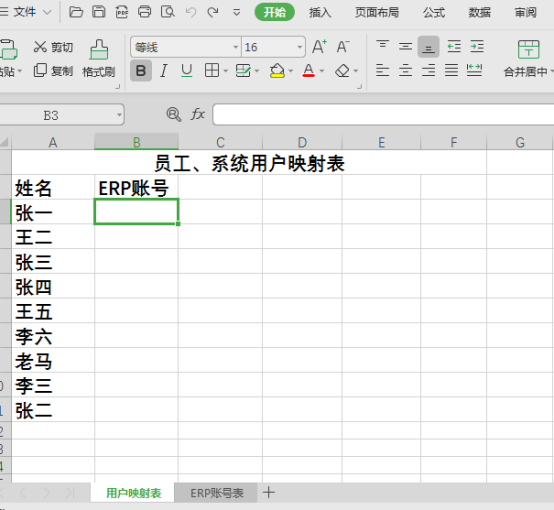
Next, we start designing based on the VLOOKUP function syntax. In the B3 table of the "User Mapping Table", enter the formula:
"=VLOOKUP( User mapping table!A3,ERP account table!$A$3:$B$11,2,0)", which means, in the A3 to B11 areas of the "ERP account table", search for the A3 cell of the "user mapping table" If the data matches, copy the data in the second column (i.e. column B) in the "ERP account table" to table B3.
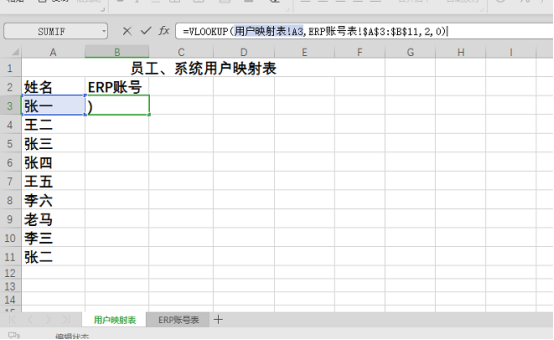
#Press the Enter key on the keyboard and the data will be imported into the user mapping table.
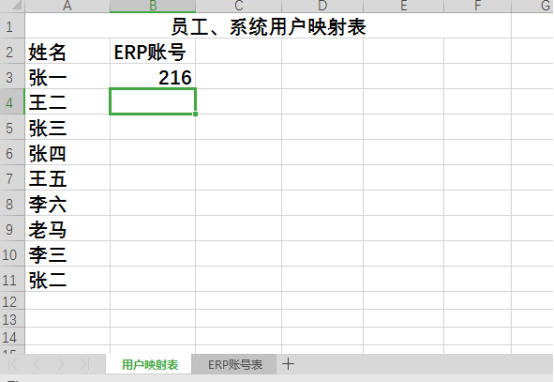
Since the "User Mapping Table!A3" in the formula uses relative values, select column B3, drag the mouse down and fill in the formula in the data area.
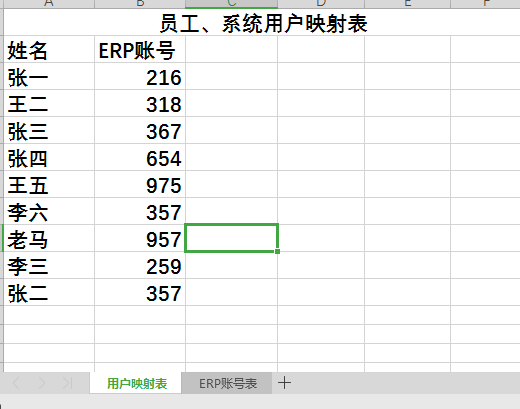
According to the above formula, other application system accounts are automatically filled in the "User Mapping Table" in sequence. If the name exists, #N/A will be displayed if the account does not exist. In order to display more beautifully, you can directly search and replace it with empty.
The data comparison in the table is as follows:
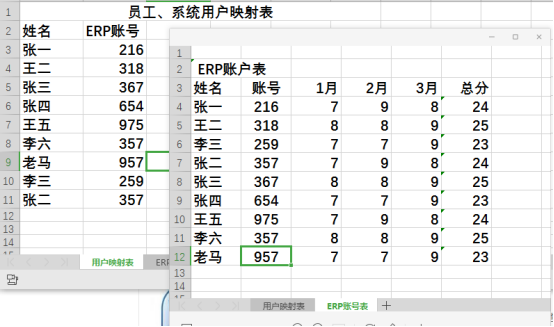
The above is the detailed content of How to use Excel mapping. For more information, please follow other related articles on the PHP Chinese website!

